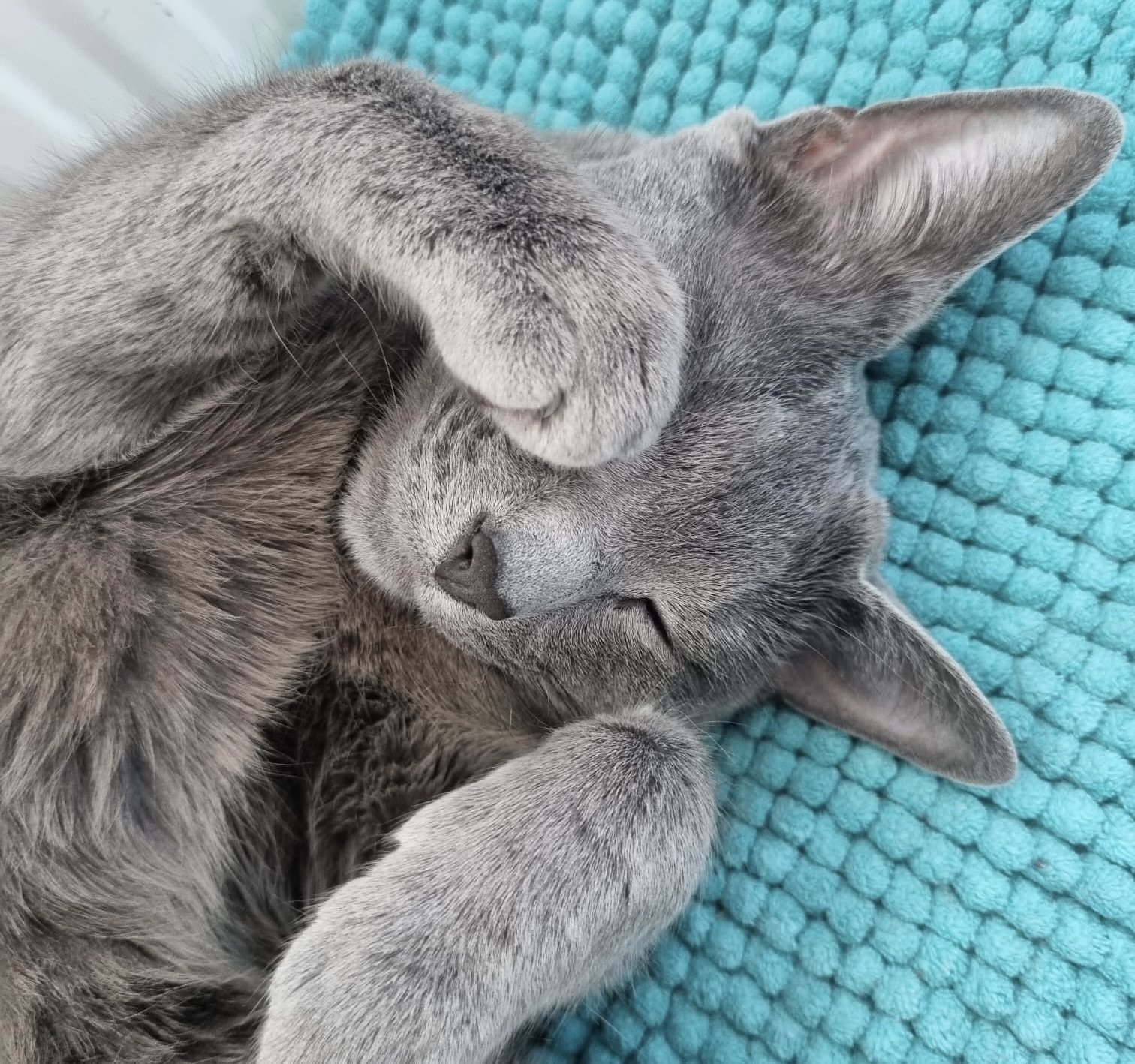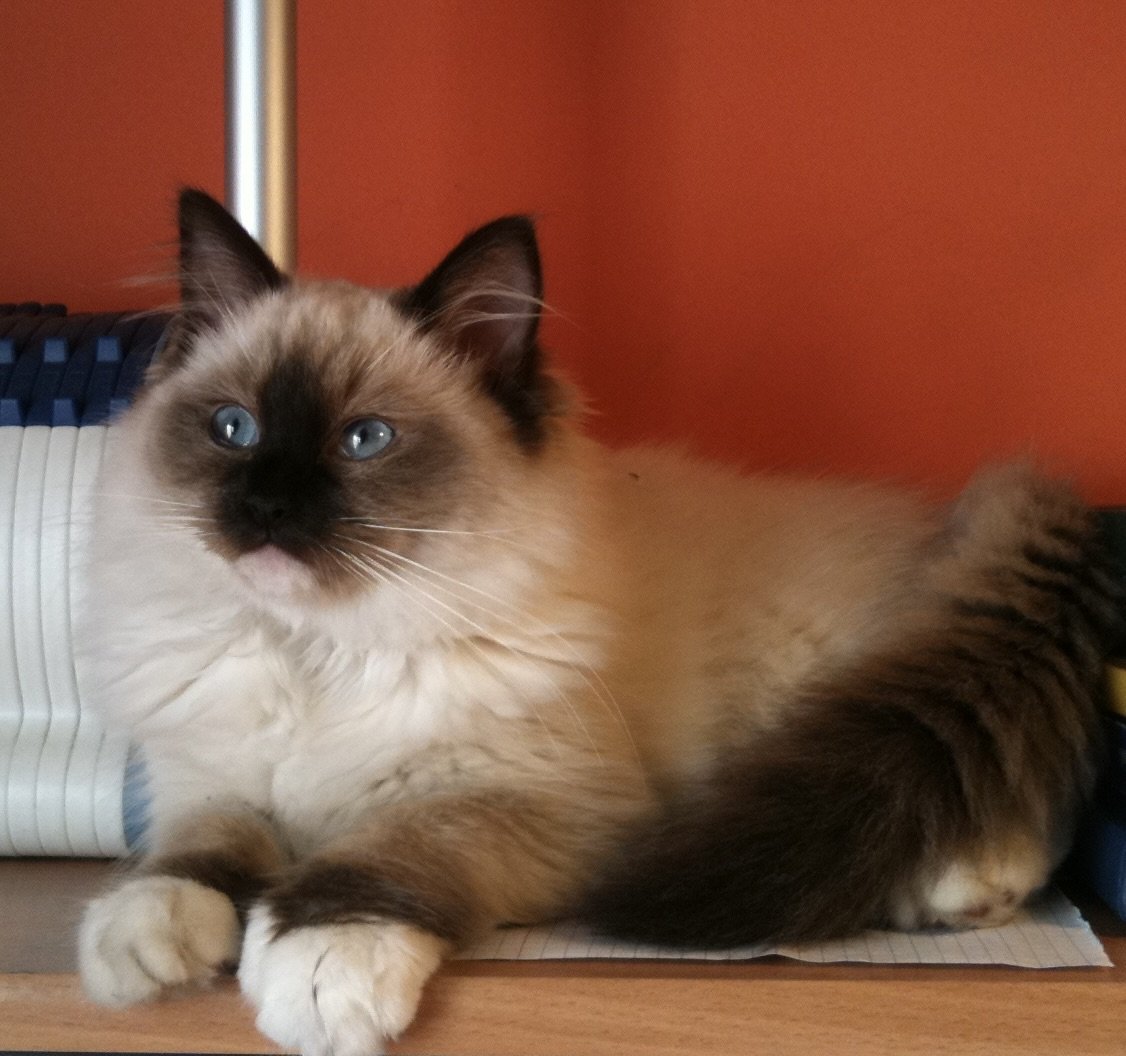
Filters
CLEAR ALLPeterbalds are the crossbreed between a Donskoy cat and an Oriental Shorthair. This cat breed is fairly new—the first of this type were bred in 1994 in Russia. Peterbalds are sophisticated, slender, and elegant cats, taking many qualities from their parentage, namely the Oriental Shorthair’s and Siamese’s gracefulness and the Don Sphynx's bald gene.
These quirky cats are easy to care for. They have fun-loving, spirited characters, and their appearance can only be described as exceptionally adorable. Peterbalds have a sense of loyalty that many other cats do not have. In fact, they are often compared to dogs because they are so affectionate toward their human companions.
Peterbalds are a rare yet highly sought-after cat breed. Their coats come in a wide variety: from completely bald to fuzzy to even a full short coat. Extraordinarily devoted and one of the friendliest breeds, they are a perfect cat breed for families and those individuals with a small home. Their sweet and curious nature has snatched the hearts of cat lovers worldwide.
This cat breed is incredibly friendly and will giddily greet guests rather than hiding in fear when they come. However, because of their social temperament, they dislike being left alone and they need constant and reliable companionship. The good news is that this companionship does not have to be human friendship alone. Peterbald cats are very comparable to their Oriental Shorthair cousins because they can form close bonds with other cats and dogs.
Peterbalds are spirited and agile. They spend their waking hours being curious about everything, helping their favourite human companion, and searching for tall vantage points in their home. They tend to talk while they are at it, a tad loud to express their opinions on everything, such as the quantity of attention you provide them to the food they like in their bowl.
While the Peterbald may not be the perfect pet for everyone, this cat breed is a captivating one. Those who are fortunate enough to bring a Peterbald kitten home have a devoted friend for life.
Peterbalds are the crossbreed between a Donskoy cat and an Oriental Shorthair. This cat breed is fairly new—the first of this type were bred in 1994 in Russia. Peterbalds are sophisticated, slender, and elegant cats, taking many qualities from their parentage, namely the Oriental Shorthair’s and Siamese’s gracefulness and the Don Sphynx's bald gene.
These quirky cats are easy to care for. They have fun-loving, spirited characters, and their appearance can only be described as exceptionally adorable. Peterbalds have a sense of loyalty that many other cats do not have. In fact, they are often compared to dogs because they are so affectionate toward their human companions.
Peterbalds are a rare yet highly sought-after cat breed. Their coats come in a wide variety: from completely bald to fuzzy to even a full short coat. Extraordinarily devoted and one of the friendliest breeds, they are a perfect cat breed for families and those individuals with a small home. Their sweet and curious nature has snatched the hearts of cat lovers worldwide.
This cat breed is incredibly friendly and will giddily greet guests rather than hiding in fear when they come. However, because of their social temperament, they dislike being left alone and they need constant and reliable companionship. The good news is that this companionship does not have to be human friendship alone. Peterbald cats are very comparable to their Oriental Shorthair cousins because they can form close bonds with other cats and dogs.
Peterbalds are spirited and agile. They spend their waking hours being curious about everything, helping their favourite human companion, and searching for tall vantage points in their home. They tend to talk while they are at it, a tad loud to express their opinions on everything, such as the quantity of attention you provide them to the food they like in their bowl.
While the Peterbald may not be the perfect pet for everyone, this cat breed is a captivating one. Those who are fortunate enough to bring a Peterbald kitten home have a devoted friend for life.



The Peterbald is a medium sized cat that will weigh between 7 and 14 pounds when fully grown. They have slim, muscular bodies with defined abdomens, webbed feet, and long whip-like tails. They usually have wedge-shaped heads and oversized ears that look a bit over the top. Their ears are large and almond-shaped, and the colour is most often green.
There are five variations when it comes to their coats. Many Peterbalds carry the hair-losing gene, but their level of baldness varies. Some are “ultra bald,” meaning they have no hair, eyelashes or whiskers at all, and others are bald but have eyelashes and whiskers.
Then, some are partly bald, with fine short hair on the face, paws, and tail only. Alternatively, they may have a short coat of fuzzy fur all over that looks and feels like velour. Finally, it’s also possible for them to not have the “Peterbald trait” and have a standard fur coat instead. This variation is known as “straight coat.”
It isn’t easy to know what a Peterbald cat will look like as an adult. Some may be born with fur but then lose it over time. Alternatively, nude Peterbald kittens can later grow a full coat of hair! Furthermore, their whiskers can be straight, curled, or crinkled.
Because they have little to no fur, Peterbalds struggle to regulate their temperature. They are sensitive to both cold climates and sunlight, so because of this, they should stay indoor-only pets. In terms of grooming, they are pretty low maintenance if they have fur. However, they will need weekly baths if they are fully or partially bald.
Peterbalds are sweet and affectionate cats that develop deep bonds with their humans. They will likely follow you around the house and stay under your feet. They are pretty smart and are in touch with their owners’ emotions. Their high intelligence also means that they are easy to train, with many Peterbalds learning commands and tricks.
Peterbalds are active but easy-going, meaning that they are happy to play independently. Therefore, they must have lots of toys, including challenging puzzles. You should also enrich their space with cat trees, towers and climbing areas, where they can release their pent up energy.
They are cuddly cats, too. They will likely climb under the covers and snuggle with you in bed or curl up next to you on the couch. They will also show their love vocally. Peterbalds can be pretty loud and love to communicate through their raspy meows.
Peterbalds get along with everyone, including children and other animals. Therefore, they make an excellent family pet and are ideal for those looking for an alternative to a dog. They seriously enjoy human company and are friendly towards everyone they meet. However, this does mean that they are not particularly fond of being left alone. That being said, if they have some furry friends around to play with, they won’t mind too much.
If you are considering getting a Peterbald kitten, you should commit to keeping them indoors. Peterbalds are sensitive to the sun and cold temperature, so you should not allow them to roam. Therefore, you’ll need to enrich their environment, ensuring they have plenty of places to run around and high platforms to climb and perch on.



Their stories
We love happy endings. Discover stories of pets who found their beloved family with the help of The Pedigree Paws <3.

Neo
Russian Blue
We had some concerns purchasing a kitten online but our experience with The Pedigree Paws was great. They connected us with Caroline, the Russian Blue breeder and we had many conversations and received multiple pictures and videos. She answered to all our questions.
The Pedigree Paws verified for us all the vaccinations and health checks to make sure our new kitten was 100% healthy.
Thank you for all your help The Pedigree Paws! Highly recommended!

Jack
Miniature Dachshund
One of the reasons I was hesitant to order a puppy from The Pedigree Paws is because I live in Spain. However they connected me with a very good FCI breeder in Barcelona.
He showed me all the health documents of both parents, their pedigree and answer to all my questions. I am so happy they helped me to find a healthy puppy as finding one by myself was very overwhelming. Contacting The Pedigree Paws was the best decision and I highly recommend them to everybody!

Stitch
Chartreux
From the kittens's selection to the arrival of our Chartreux kitten, The Pedigree Paws was there to assist us. We had great experience with them, and they breeder Alexandra from France with whom they connected us and from whom we got our kitten from. They are very prompt in answering our initial and follow-up questions while our kitten was in transit. Very reliable and trustworthy!
Thank you so much for all your help. We are very happy with our new family member. We will definitely recommend it to all our friends.
Athena
Chihuahua
It's been a few months since we decided to find a Chihuahua puppy to join our family, however we had issues finding a good breeder.
We contacted The Pedigree Paws and they connected us with a very unique breeder in Greece. Many videos and pictures were shown, the breeder shared with us the proof of vaccinations, deworming and her 5 generation pedigree. We were fortunate as George, the breeder was able to deliver the puppy to us personally. We are very pleased with our beautiful Athena. Thank you, The Pedigree Paws, for being truthful and transparent.
Thor
Abyssinian
I feel wonderful having help from The Pedigree Paws finding the dream Abyssinian kitten I was looking for. Thor is the absolute dream! The Pedigree Paws team was really patient and responsible in everything. Lovely experience! They replied to every questions, requirements, and information I ask about the kitten.
Fin
Chihuahua
Thank you for finding for me such a beautiful Chihuahua puppy! I love him so much from the minute I saw him. He changed my world.
Kate, from The Pedigree Paws assisted me through the whole process informing me about everything from health checks to arranging a Pet Nanny to transport Fin directly to my door. So thankful that the experience went so well! I love my Fin.

Emi
Ragdoll
I have always wanted a Ragdoll kitten as it was my dream cat breed, but didnt know how to find one as heard a lot about kitten farms and bad breeders. I reached out to The Pedigree Paws and they were very accommodating and transparent from the start. They offered me few kittens from their list of breeders and when I saw Emi I knew she was the one! We went through the kitten's parents DNA testing as for me that was a priority to have a kitten free from genetic disorders. We sealed the deal and now I have the best kitten I could dream of! Thank you very much for all your help
Shima
Russian Blue
I really wanted a Russian Blue kitten, but was very nervous getting one after reading horror stories about scammers on the Internet. I had my first call with Natalia, from The Pedigree Paws and with her help I was able to connect with the breeder, that I knew I could trust. I am very lucky to have now Shima, she is an absolute joy to live with.
Need some help?
Contact us to speak to our friendly advisor, who will gladly help you find your dream pet!



We are registered in England and Wales under registration number 12568840,
and our registered office is at 58-60 Kensington Church Street, W8 4DB London, England.
© 2023 The Pedigree Paws